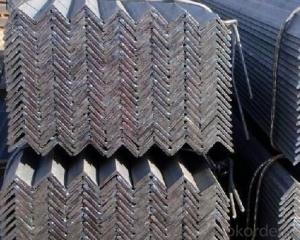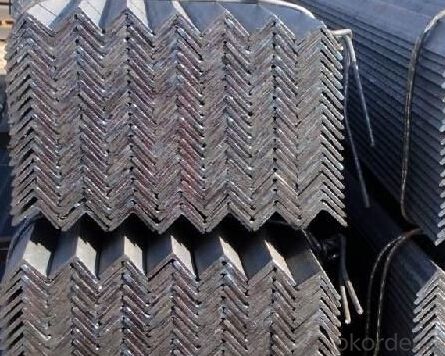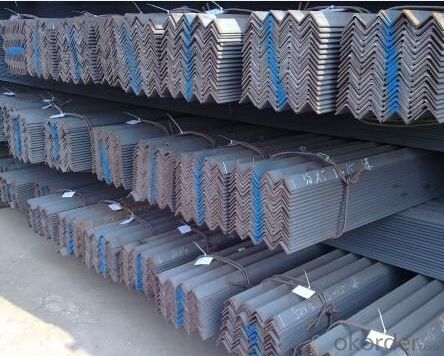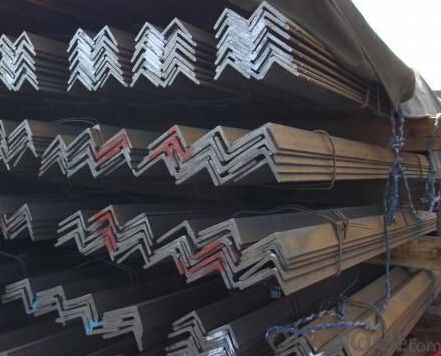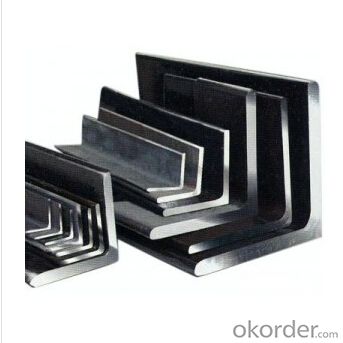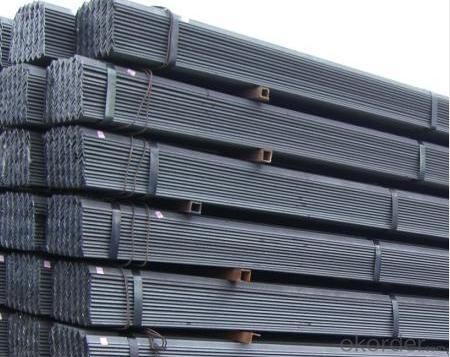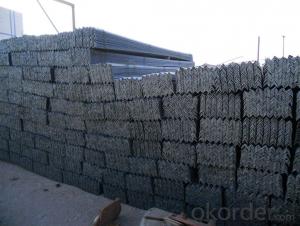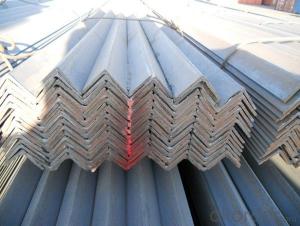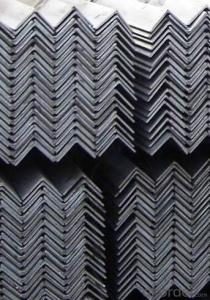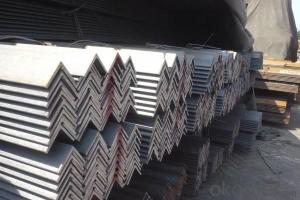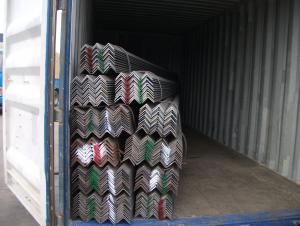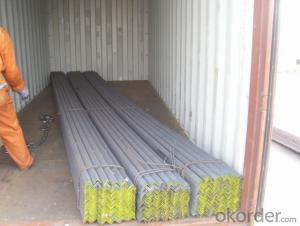Specifications of JIS G3192,SS400;SS540 Angle Steel
- Loading Port:
- Tianjin
- Payment Terms:
- TT OR LC
- Min Order Qty:
- 50 m.t.
- Supply Capability:
- 5000 m.t./month
OKorder Service Pledge
OKorder Financial Service
You Might Also Like
1. Structure of Angle Steel Description
Angle steel has equal angle, unequal angle. Standards: GB,ASTM,BS,AISI,DIN,JIS Material:Material: GB Q235B, Q345B or Equivalent; ASTM A36; EN 10025, S235JR, S355JR; JIS G3192, SS400; SS540.
Sizes:
Sizes: 25mm-250mm | ||
a*t | ||
25*2.5-4.0 | 70*6.0-9.0 | 130*9.0-15 |
30*2.5-6.6 | 75*6.0-9.0 | 140*10-14 |
36*3.0-5.0 | 80*5.0-10 | 150*10-20 |
38*2.3-6.0 | 90*7.0-10 | 160*10-16 |
40*3.0-5.0 | 100*6.0-12 | 175*12-15 |
45*4.0-6.0 | 110*8.0-10 | 180*12-18 |
50*4.0-6.0 | 120*6.0-15 | 200*14-25 |
60*4.0-8.0 | 125*8.0-14 | 250*25 |
Material details:
Alloy No | Grade | Element (%) | |||||
C | Mn | S | P | Si | |||
|
|
|
|
|
|
| |
Q235 | B | 0.12—0.20 | 0.3—0.7 | ≤0.045 | ≤0.045 | ≤0.3 | |
|
|
|
|
|
|
| |
Alloy No | Grade | Yielding strength point( Mpa) | |||||
Thickness (mm) | |||||||
≤16 | >16--40 | >40--60 | >60--100 | ||||
≥ | |||||||
|
|
|
|
|
| ||
Q235 | B | 235 | 225 | 215 | 205 | ||
Alloy No | Grade | Tensile strength (Mpa) | Elongation after fracture (%) | ||||
Thickness (mm) | |||||||
| ≤16 | >16--40 | >40--60 | >60--100 | |||
≥ | |||||||
|
|
|
|
|
|
| |
Q235 | B | 375--500 | 26 | 25 | 24 | 23 | |
2. Main Features of angle steel
Broad-spectrum
High quantity
High strength
3.Usage & Applications of GB Q235 Angle Steel
Trusses
Transmission towers;
Telecommunication towers;
Bracing for general structures;
Stiffeners in structural use.
4.Packaging & Delivery of GB Q235 Angle Steel
1. Transportation: the goods are delivered by truck from mill to loading port, the maximum quantity can be loaded is around 40MTs by each truck. If the order quantity cannot reach the full truck loaded, the transportation cost per ton will be little higher than full load.
2. With bundles and load in 20 feet/40 feet container, or by bulk cargo, also we could do as customer's request.
3. Marks:
Color mark: There will be color marking on both end of the bundle for the cargo delivered by bulk vessel. That makes it easily to distinguish at the destination port.
Tag mark: There will be tag mark tied up on the bundles. The information usually including supplier logo and name, product name, made in China, shipping marks and other information request by the customer.
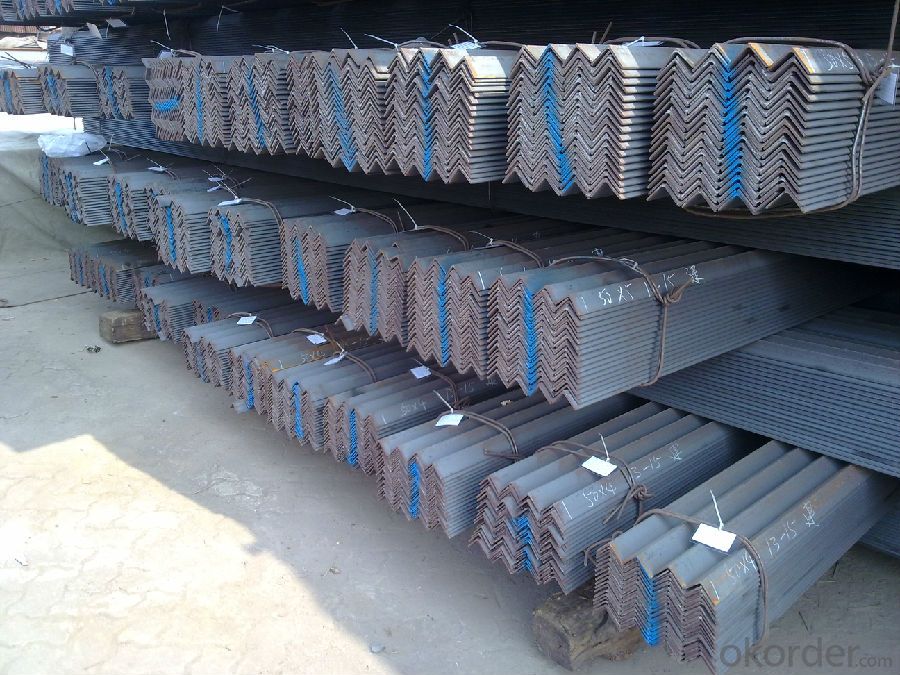
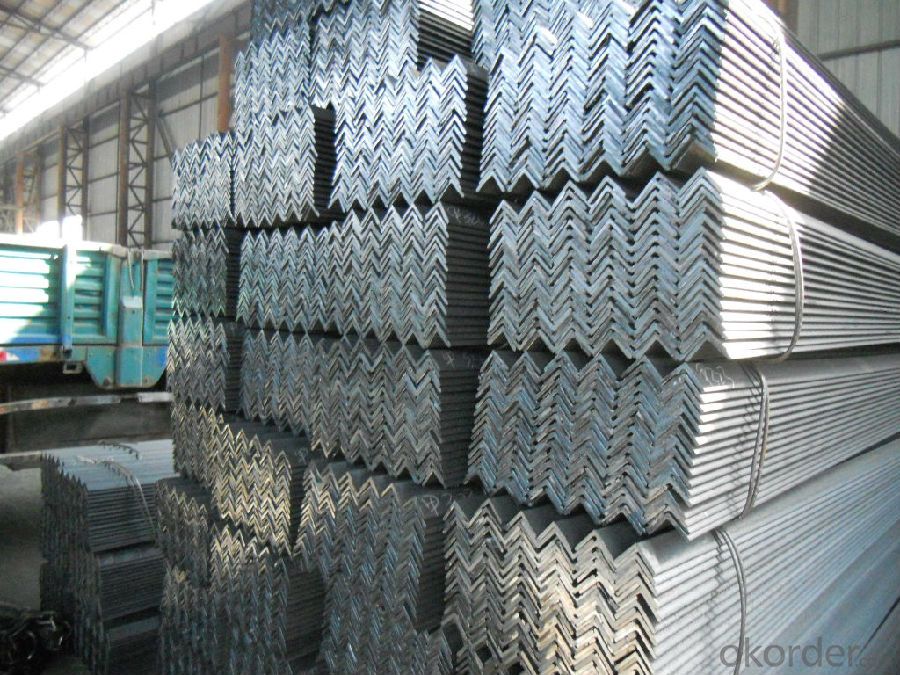
5.FAQ
We have organized several common questions for our clients,may help you sincerely:
①How about your company?
A world class manufacturer & supplier of castings forging in carbon steel and alloy steel,is one of the large-scale professional investment casting production bases in China,consisting of both casting foundry forging and machining factory. Annually more than 8000 tons Precision casting and forging parts are exported to markets in Europe,America and Japan. OEM casting and forging service available according to customer’s requirements.
②How to guarantee the quality of the products?
We have established the international advanced quality management system,every link from raw material to final product we have strict quality test;We resolutely put an end to unqualified products flowing into the market. At the same time, we will provide necessary follow-up service assurance.
③How long can we receive the product after purchase?
In the purchase of product within three working days, We will arrange the factory delivery as soon as possible. The pecific time of receiving is related to the state and position of customers.Commonly 7 to 10 working days can be served.
- Q: Can steel angles be used for staircase handrails?
- Certainly, staircase handrails can indeed be constructed using steel angles. These steel angles possess great versatility and strength, which renders them a suitable choice for providing support and stability to staircase handrails. By welding or bolting them easily to the staircase structure, a secure connection is ensured. Moreover, steel angles are available in a wide array of sizes and lengths, allowing for customization to perfectly fit the specific dimensions and design requirements of the staircase. Furthermore, these steel angles can be finished with various coatings, such as powder coating or galvanization, to enhance their durability and resistance against corrosion. All in all, steel angles present a practical and dependable option for the construction of staircase handrails.
- Q: What is hot dip galvanized steel angle?
- It's angle iron. Hot galvanizing is a way of preserving it
- Q: How do steel angles contribute to energy-efficient construction?
- Steel angles contribute to energy-efficient construction in several ways. Firstly, steel angles are commonly used as structural components in buildings, such as in the framing of walls, roofs, and floors. Their high strength-to-weight ratio allows for the creation of lighter and more efficient structures. This means that less steel is needed to support the building, reducing the overall weight and material usage, which in turn reduces the energy required for construction and transportation. Secondly, steel angles can be easily prefabricated off-site, allowing for faster construction times and reduced labor costs. This not only saves time and money but also minimizes energy consumption during the construction process. Moreover, steel is a highly durable and long-lasting material, which reduces the need for frequent maintenance and repairs. This durability translates into energy savings over the life cycle of the building, as less energy is required for ongoing maintenance and replacements. Additionally, steel angles can be recycled at the end of their life cycle, reducing the demand for virgin materials and minimizing the environmental impact of construction. The recycling process requires less energy compared to the production of new steel, resulting in energy savings and reduced greenhouse gas emissions. Lastly, steel angles can be integrated into energy-efficient building systems, such as insulation, HVAC ductwork, and renewable energy installations. The versatility of steel allows for the creation of systems that optimize energy performance, such as efficient heating and cooling systems or solar panel installations. In conclusion, steel angles contribute to energy-efficient construction by providing strength and stability while reducing material usage, enabling faster construction times, minimizing maintenance needs, facilitating recycling, and integrating with energy-efficient building systems.
- Q: Can steel angles be used in the construction of schools?
- Certainly, schools can utilize steel angles for construction purposes. These multifunctional components are widely employed in various construction projects owing to their robustness and long-lasting nature. They serve numerous functions, including framing, supporting beams, and reinforcing structures. By incorporating steel angles, buildings gain stability and structural integrity, making them ideal for schools where safety and durability are paramount. Furthermore, steel angles possess fire-resistant properties, which are crucial for ensuring the well-being of students and faculty. Ultimately, steel angles emerge as a dependable and budget-friendly option for constructing schools.
- Q: 304 what does angle iron stand for?
- 304 stainless steel applications:304 is the most widely used stainless steel, heat-resistant steel. Used in food production equipment, chemical equipment, nuclear energy, etc..
- Q: How do steel angles perform in corrosive gas or liquid environments?
- The strength and versatility of steel angles make them a popular choice for various structural applications. However, their performance in corrosive gas or liquid environments can be impacted by the grade of steel used and the concentration and nature of the corrosive substance. When exposed to corrosive gases or liquids, steel angles can undergo corrosion, leading to a gradual deterioration of their structural integrity. The extent of corrosion depends on factors such as exposure time, temperature, humidity, and the corrosiveness of the gas or liquid. To counteract the effects of corrosion, protective coatings can be applied to steel angles used in corrosive environments. Examples of common protective coatings include galvanization, which involves adding a layer of zinc to the steel surface, as well as epoxy or polyurethane coatings. These coatings create a barrier that prevents direct contact between the corrosive substance and the steel, thereby slowing down the corrosion process. However, it is important to acknowledge that even with protective coatings, steel angles may still experience some level of corrosion over time. The extent of corrosion will depend on the quality and durability of the coating, as well as the regular maintenance and inspection of the steel angles. In extremely aggressive or highly concentrated corrosive environments, steel angles may not be the most suitable choice. In such cases, alternative materials like stainless steel or corrosion-resistant alloys may be more appropriate. In conclusion, the performance of steel angles in corrosive gas or liquid environments is influenced by specific conditions and protective measures in place. Regular inspection, proper maintenance, and the use of suitable coatings are vital for ensuring the longevity and performance of steel angles in corrosive environments.
- Q: What are the advantages of using steel angles?
- There are several advantages of using steel angles. Firstly, steel angles provide excellent structural support due to their high strength and durability. They can withstand heavy loads and extreme weather conditions, making them ideal for construction projects. Additionally, steel angles are versatile and can be easily fabricated, cut, and welded to meet specific design requirements. They are also cost-effective, as they have a long lifespan and require minimal maintenance. Lastly, steel angles offer great aesthetic appeal, making them a popular choice for architectural applications.
- Q: What are the different types of steel angles used in storage racks?
- There are primarily two types of steel angles used in storage racks: perforated angles and slotted angles. Perforated angles have evenly spaced holes along the length, allowing for flexibility in adjusting shelf heights. Slotted angles, on the other hand, have elongated slots that provide the option for adjustable shelving as well as easier assembly and disassembly of the storage racks.
- Q: Are steel angles resistant to chemicals?
- Yes, steel angles are generally resistant to chemicals due to their high durability and corrosion resistance. However, their resistance may vary depending on the specific type of chemical and environment they are exposed to.
- Q: What are the different methods of surface preparation for steel angles before painting?
- There are various techniques available for preparing steel angles before painting, and the method chosen depends on the condition of the steel surface and the desired level of paint adhesion and durability. One widely used technique is abrasive blasting, also known as sandblasting. This entails directing abrasive particles towards the steel surface to eliminate rust, mill scale, and other contaminants. Abrasive blasting not only cleans the surface but also creates a rough texture, enhancing paint adhesion. Chemical cleaning is another method employed to prepare steel angles for painting. It involves utilizing chemical solutions or solvents to eliminate grease, oil, and other organic contaminants. This technique is particularly effective for stubborn contaminants that cannot be removed by abrasive blasting alone. Mechanical cleaning techniques, such as wire brushing or grinding, can be utilized to eliminate loose rust, scale, and old paint. These methods are suitable for smaller areas or localized rust spots. In certain instances, power tool cleaning may suffice. This involves using power tools like grinders, sanders, or wire brushes to clean the steel surface. However, it is important to ensure that these tools do not create a polished or smooth surface, as this can hinder paint adhesion. After the surface has been cleaned, it is crucial to remove any remaining contaminants by wiping the surface with a solvent or a clean cloth soaked in a suitable solvent. This step guarantees that the surface is free from any residual contaminants that could affect paint adhesion. Lastly, before painting, it is essential to prime the steel angles. Primers provide additional corrosion protection and enhance the adhesion of the topcoat. The choice of primer depends on the specific project requirements, such as exposure to harsh weather conditions or chemical exposure. In conclusion, the various methods of surface preparation for steel angles before painting include abrasive blasting, chemical cleaning, mechanical cleaning, power tool cleaning, solvent wiping, and priming. By selecting the appropriate method, one can ensure that the paint adheres well to the steel surface and provides long-lasting protection against corrosion.
Send your message to us
Specifications of JIS G3192,SS400;SS540 Angle Steel
- Loading Port:
- Tianjin
- Payment Terms:
- TT OR LC
- Min Order Qty:
- 50 m.t.
- Supply Capability:
- 5000 m.t./month
OKorder Service Pledge
OKorder Financial Service
Similar products
Hot products
Hot Searches
Related keywords
